
Canadian Confederation was the process by which three British North American provinces—the Province of Canada, Nova Scotia, and New Brunswick—were united into one federation called the Dominion of Canada, on July 1, 1867. Upon Confederation, Canada consisted of four provinces: Ontario and Quebec, which had been split out from the Province of Canada, and the provinces of Nova Scotia and New Brunswick. Over the years since Confederation, Canada has seen numerous territorial changes and expansions, resulting in the current number of ten provinces and three territories.

Sir George Gilbert Scott, largely known as Sir Gilbert Scott, was a prolific English Gothic Revival architect, chiefly associated with the design, building and renovation of churches and cathedrals, although he started his career as a leading designer of workhouses. Over 800 buildings were designed or altered by him.

Sir Charles BarryFRS RA was a British architect, best known for his role in the rebuilding of the Palace of Westminster in London during the mid-19th century, but also responsible for numerous other buildings and gardens. He is known for his major contribution to the use of Italianate architecture in Britain, especially the use of the Palazzo as basis for the design of country houses, city mansions and public buildings. He also developed the Italian Renaissance garden style for the many gardens he designed around country houses.

Edward Middleton Barry RA was an English architect of the 19th century.

Charles Barry Jr. (1823–1900) was an English architect of the mid-late 19th century, and eldest son of Sir Charles Barry. Like his younger brother and fellow architect Edward Middleton Barry, Charles Jr. designed numerous buildings in London. He is particularly associated with works in the south London suburb of Dulwich.

Portcullis House (PCH) is an office building in Westminster, London, England, that was commissioned in 1992 and opened in 2001 to provide offices for 213 members of parliament and their staff. The public entrance is on the Embankment. Part of the Parliamentary Estate, the building augments limited space in the Palace of Westminster and surroundings.
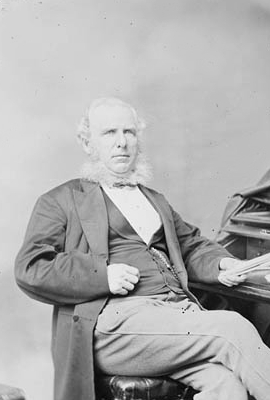
Jonathan McCully was a participant at the Confederation conferences at Charlottetown, Quebec City, and in London, and is thus considered one of the Fathers of Canadian Confederation. He did much to promote union through newspaper editorials. For his efforts, he received a Senate appointment. He later became a judge of the Nova Scotia Supreme Court.

The London Conference was held in London, in the United Kingdom, in 1866. It was the third and final in a series of conferences that led to Canadian Confederation in 1867. Sixteen delegates from the Province of Canada, Nova Scotia, and New Brunswick gathered to set out the final outline of the proposed Canadian Confederation, resulting in the British North America Act, 1867.
Sir James Pennethorne was a British architect and planner, particularly associated with buildings and parks in central London.

Sir Matthew Digby Wyatt was a British architect and art historian who became Secretary of the Great Exhibition, Surveyor of the East India Company and the first Slade Professor of Fine Art at the University of Cambridge. From 1855 until 1859 he was honorary secretary of the Royal Institute of British Architects, and in 1866 received the Royal Gold Medal.
Philip Charles Hardwick was an English architect.
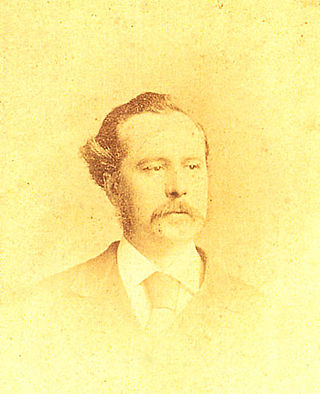
Edward Welby Pugin was an English architect, the eldest son of architect Augustus Welby Northmore Pugin and Louisa Barton and part of the Pugin & Pugin family of church architects. His father was an architect and designer of Neo-Gothic architecture, and after his death in 1852 Edward took up his successful practice. At the time of his own early death in 1875, Pugin had designed and completed more than one hundred Catholic churches.
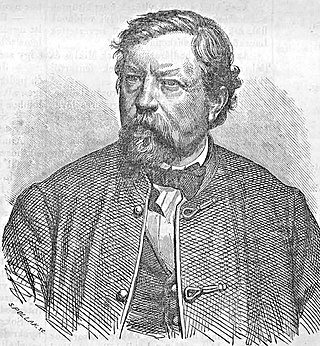
Miklós Ybl was one of Europe's leading architects in the mid to late nineteenth century as well as Hungary's most influential architect during his career. His most well-known work is the Hungarian State Opera House in Budapest (1875–84).
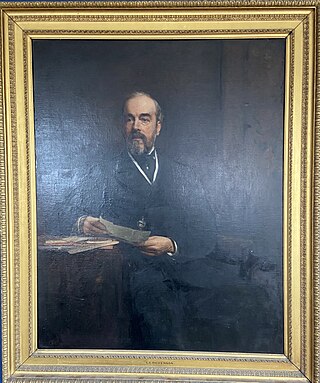
Lucas Brothers was a leading British building business based in London.
George Somers Clarke (1822–1882) was an English architect. He became a RIBA Associate in March 1845 and a Fellow in June 1859. He sat on RIBA Council. In 1868 he had offices at 20 Cockspur Street, London. He was a pupil of Sir Charles Barry and worked for him on designs for the Palace of Westminster in 1849.

The Hotel Cecil was a grand hotel built 1890–96 between the Thames Embankment and the Strand in London, England. It was named after Cecil House, a mansion belonging to the Cecil family, which occupied the site in the 17th century. The hotel was largely demolished in 1930, and Shell Mex House now stands on its site.
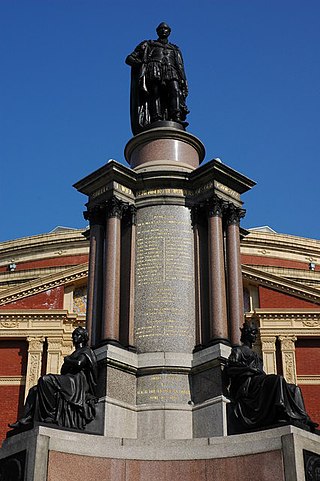
Joseph Durham was an English sculptor.

The Montcalm Hotels are a group of luxury hotels in Central London, England.

Section 58 of the Constitution Act, 1867 is a provision of the Constitution of Canada creating the office of provincial lieutenant governors, and providing for appointment by the Governor General of Canada.

Section 145 of the Constitution Act, 1867 is a repealed provision of the Constitution of Canada which required the federal government to build a railway connecting the River St. Lawrence with Halifax, Nova Scotia.
















